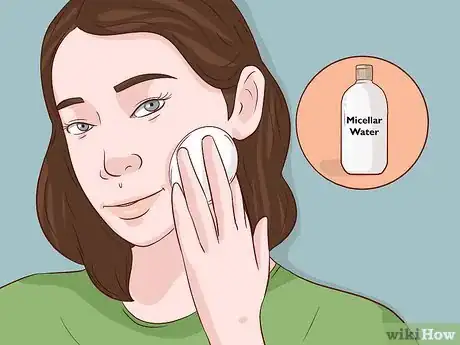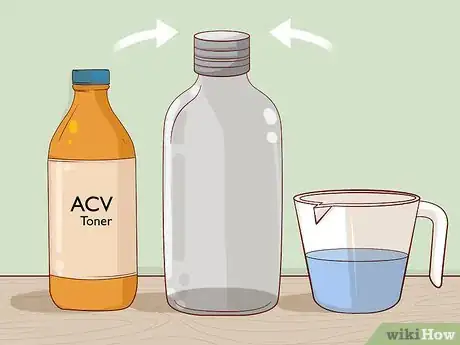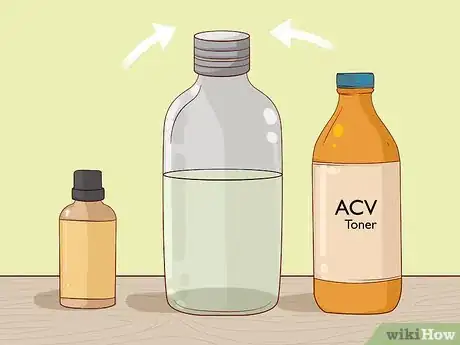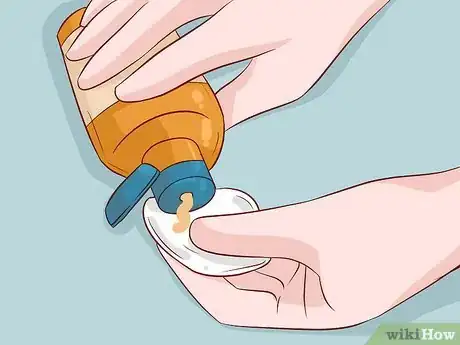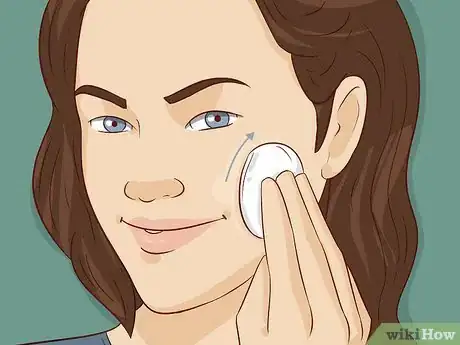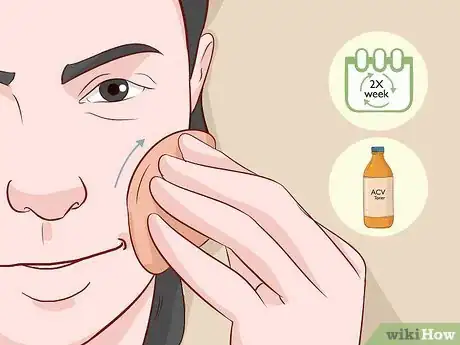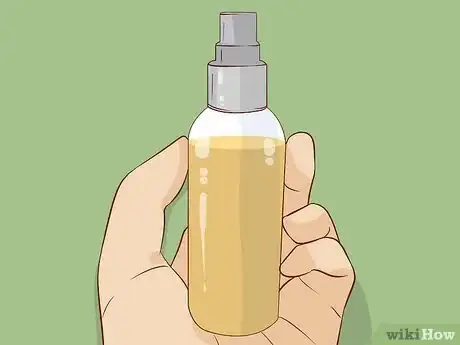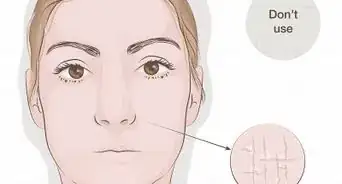This article was co-authored by wikiHow staff writer, Janice Tieperman. Janice is a professional and creative writer who has worked at wikiHow since 2019. With both a B.A. and M.A. in English from East Stroudsburg University, she has a passion for writing a wide variety of content for anyone and everyone. In her free time, you can find her working on a new crochet pattern, listening to true crime podcasts, or tackling a new creative writing project.
There are 7 references cited in this article, which can be found at the bottom of the page.
This article has been viewed 20,196 times.
Learn more...
Apple cider vinegar (ACV) is a versatile substance that many people have used to care for both their skin and GI tract. While you can’t use ACV as a soap replacement, you can use it as a cleansing toner for your skin. If you aren’t sensitive to this substance, feel free to experiment with small amounts of ACV over 2-3 days throughout the week!
Ingredients
- 1 cup (240 mL) of apple cider vinegar
- 2 cups (470 mL) of distilled water
- 3-5 drops of tea tree oil
Steps
Applying a Cleansing Apple Cider Vinegar Toner
-
1Remove your makeup with micellar water or cleanser. Pour a small amount of micellar water onto the surface of a cotton square. Don’t oversaturate the cotton; instead, lightly soak the surface. Dab the square all over your face, focusing on the eyes, cheeks, forehead, nose, and chin. Make sure that all of your makeup is removed before continuing.[1]
- You can also use a cleanser designed specifically for makeup removal.
-
2Add distilled water to a reusable glass bottle. Pour 2 cups (470 mL) of distilled water into an airtight glass storage bottle. You’re making a large amount of ACV toner, make sure to have a container ready to store the excess mixture. Since ACV is naturally acidic, you don’t want it eating through any plastic bottles over time.
- It's important to use distilled water for this; since you’re applying this mixture to your skin, you want the water to be as gentle and refined as possible.
- Include an extra 1 cup (240 mL) of distilled water if you have sensitive skin.[2]
Advertisement -
3Pour in 3 drops of tea tree oil and 1 cup (240 mL) of ACV into the water. Using a long stirring utensil, mix the ingredients together thoroughly. Keep in mind that this ratio works best for dry or normal skin types.[3]
- Tea tree oil is a useful ingredient, as it has anti-inflammatory qualities.
-
4Dip a cotton ball or pad into the ACV toner. Take a cotton ball or flat pad and soak the surface with the ACV mixture. Don’t saturate the cotton—when it comes to any type of vinegar, a little goes a long way.
- If you don’t have any cotton products on hand, feel free to use a soft, clean washcloth instead.
-
5Use the cotton ball to pat the product on your face. Focus on gently applying the toner across your cheeks, forehead, chin, and nose area. Pat on the mixture in soft, delicate motions, instead of just rubbing it onto your skin. Aim for your skin to be damp, but not soaking wet.[4]
-
6Let the toner sit on your skin for 5 minutes. Wait for the toner to soak into your pores, so you can benefit from its cleansing properties.[5] Don’t worry if your pores look smaller after you rub on the ACV mixture, as toning products shrink your pores naturally.[6]
- Since your skin’s pH is naturally acidic, it’s important to use a toner with slightly acidic ingredients.
- ACV shouldn’t sting when applied to the skin. Don’t apply the toner to any open cuts, as this will create a burning sensation.[7]
Warning: If your skin ever stings or burns after you apply the toner, rinse it off right away. If your skin is sensitive to ACV, then this type of toner probably isn’t the best option for your personal skincare routine.
Removing and Storing the Toner
-
1Rinse off the toner with warm running water. Cup both hands beneath your faucet and fill them with cool water. Close your eyes and gently splash the water onto your freshly toned skin. Repeat this process as necessary, until all of the ACV is rinsed off. Finally, take a moment to pat your face dry with a clean towel or washcloth.[8]
-
2Moisturize your skin to keep it from drying out. Take a coin-sized amount of your usual moisturizer and apply it in the same places as your toner. Focus on the cheeks, forehead, nose, and chin as you rub in the moisturizer with small, circular motions. [9]
- If you’d prefer, you can also use a specialized skin serum instead of a moisturizer.
-
3Use this treatment 2-3 times per week. Start by using ACV toner on a trial basis, so your skin can adjust to the acidic content. Don’t use this product every day, as ACV is too acidic to use on your face regularly. Keep an eye on your skin to ensure that it’s in tip-top shape.[10]
- Since you can’t use ACV every day, make sure that you have another cleanser on hand.
- If your skin feels irritated or inflamed at any point, stop using this product. Contact your dermatologist to discuss different alternatives that can work for your skin.
-
4Store the glass bottle of leftover toner at room temperature. Keep track of where your homemade toner is by placing it in your closet or a similar storage area. While this product has no official expiration date, monitor the appearance and smell of the toner. If it looks or smells moldy, dump it out and prepare a new batch.[11]
- Be sure to seal the bottle tightly whenever you’re finished using the toner.
Things You’ll Need
- Micellar water
- Face cleanser (optional)
- Glass bottle
- Cotton ball or pad
- Dry washcloth
- Moisturizer
Warnings
- ACV can wear down the natural barrier along your skin if used too often. Only use this homemade product on a limited basis.[12]⧼thumbs_response⧽
References
- ↑ https://www.glamour.com/story/how-to-remove-makeup-correctly-tips
- ↑ https://cljgives.org/health/top-23-uses-for-apple-cider-vinegar-backed-by-science/
- ↑ https://dermcollective.com/apple-cider-vinegar-toner/
- ↑ https://dermcollective.com/apple-cider-vinegar-toner/
- ↑ https://food.ndtv.com/beauty/5-amazing-ways-to-use-apple-cider-vinegar-for-beautiful-skin-1849129
- ↑ https://www.today.com/shop/6-reasons-why-you-should-use-facial-toner-t73941
- ↑ https://www.skinsite.com/apple-cider-vinegar-for-acne-eczema.htm
- ↑ https://food.ndtv.com/beauty/5-amazing-ways-to-use-apple-cider-vinegar-for-beautiful-skin-1849129
- ↑ https://dermcollective.com/apple-cider-vinegar-toner/
